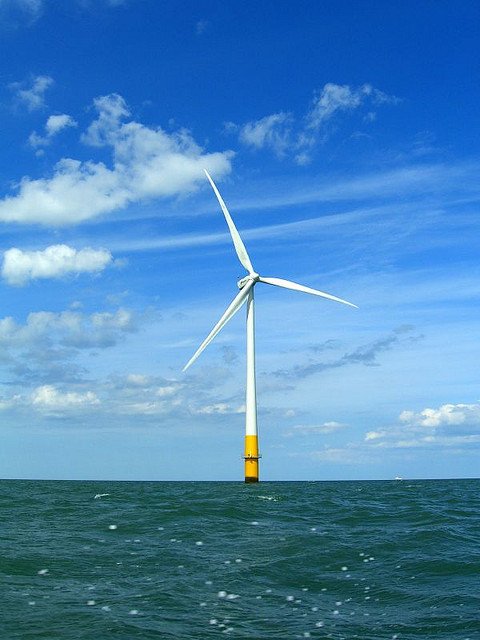As 2014 comes to a close, it’s helpful to look back and take stock of successes in the clean energy space. Here are 8 ways that it’s been a great year for clean energy (and just a few areas for improvement).
- The Clean Power Plan emerges. The EPA’s proposed rule on power plant carbon emissions, released in June, means that we’re finally going to tackle the largest single source of U.S. CO2 head on. If we do it right—including making full use of the renewable energy and energy efficiency resources that states have in abundance—it’ll be a solid boost for clean energy.

Topaz Solar Farm, the world’s largest PV facility… for now (Credit: Sarah Swenty/USFWS)
- Large-scale solar shines. Solar, both photovoltaics (PV) and concentrating solar (CSP), smashed records in 2014. February saw the start-up of the largest CSP facility in the world. And just last month the world’s largest PV project got finished.
- Rooftop PV dazzles. One of the many beautiful things about solar is its ability to play ball at the large scale and the small, and rooftop PV has had its own amazing year. By the end of the year, some 600,000 homes will have been solarized, 20 times the amount in 2006.
- Renewable energy costs continue to drop. Part of the growing success of renewables is their increasingly attractive economics. Wind power costs continue to impress, and rooftop PV is becoming competitive with the electricity grid in more and more places around the country.
- Renewable integration is no problem, experts say. As they had before, important electricity grid experts looking at the impact of large-scale adoption of renewable energy came to some very positive conclusions: that it’s doable, with little extra effort. Consider PJM’s assessment of a 30% renewables future, for example.
- LEDs score a Nobel Prize. The Nobel committee recognized the folks who made white LEDs possible, which seemed like a fine choice, given how much electricity lighting uses and the potential to make terrific gains there.

LEDs capture hearts, minds, and a Nobel Prize.
- Companies abandon ALEC. The American Legislative Exchange Council, a leading pusher of anti-clean energy and anti-climate legislation, took big hits as some powerful and high-profile members kissed ‘em goodbye. Obfuscation and misinformation lead to poor choice (as Indiana Jones saw). Less ALEC likely means better decision making for advancing clean energy.
- Leaders are leading. We had lots of examples in 2014 of clean energy leadership, from states and utilities to Fortune 500 companies and high-level elected officials, and many others, showing us how to get where we need to go on renewables and efficiency.
A bit of the flip side
While it’s been a great year in many respects, there are a few signs that some people haven’t gotten the message about the power of clean energy.
- Washington still hasn’t sorted out clean energy tax policy, even though wind power has strong bipartisan support.
- Some public utility commissions (in Florida and Wisconsin for example) and state legislatures (Ohio’s and Pennsylvania’s, for example) haven’t figured out that the future is—and needs to be—very different from the past.
- Misinformation, disinformation, and wrongheadedness still find champions.
- And the mid-term election results pose certain challenges for clean energy (and science in general).
Crescendoing into 2015

Offshore wind is a technology to watch in 2015. (Credit: phault, www.flickr.com/photos/pjh)
Overall, though, 2014 brought a whole lot of upside, and it has offered lots of promising signs for 2015. Solar looks set to continue to thrive, for example. The EPA will be finalizing the carbon rules for both new and existing fossil-fuel power plants. U.S. offshore wind, which made important progress in 2014 (see here and here, for example), is posed to finally get “steel in the water”.
Given the challenges of climate change, and the need to dramatically change how we make and use electricity, all this good news is welcome indeed.
So celebrate 2014, and expect much from 2015. We can’t afford anything less.
